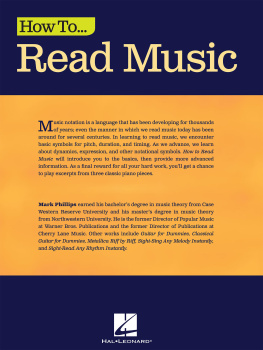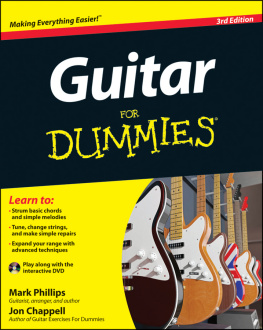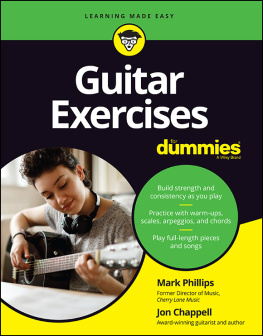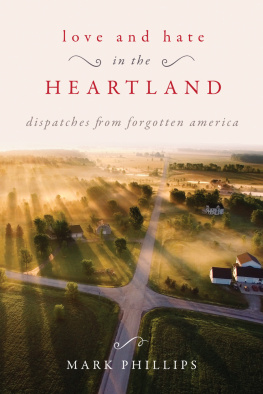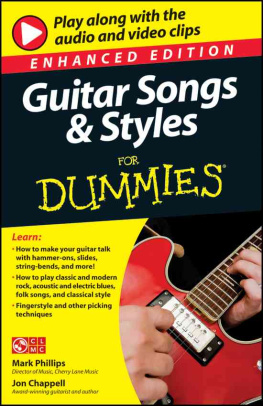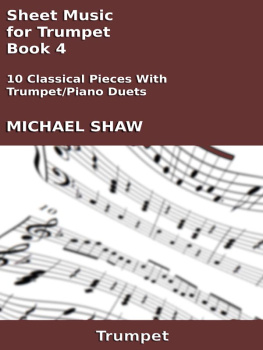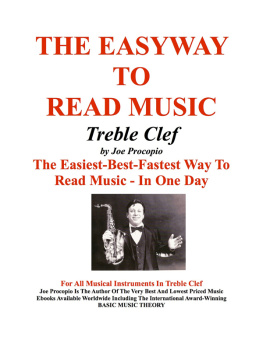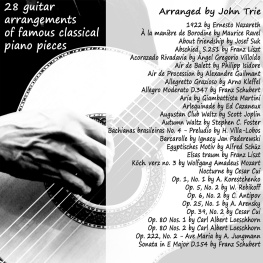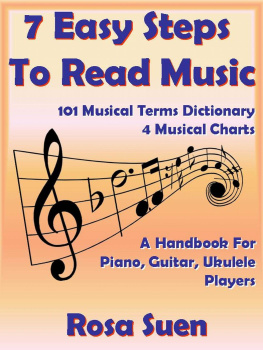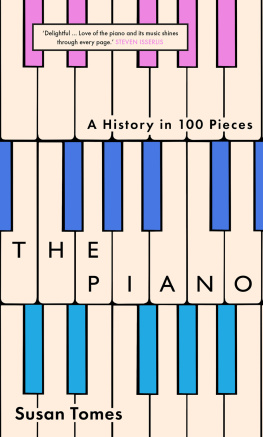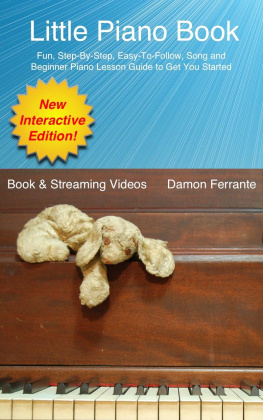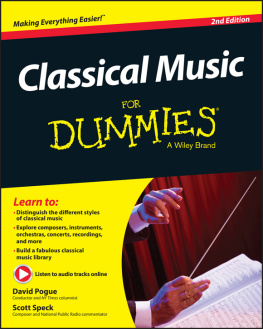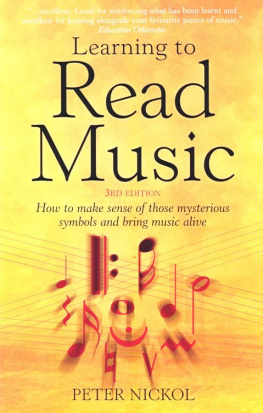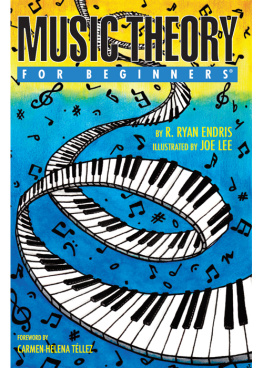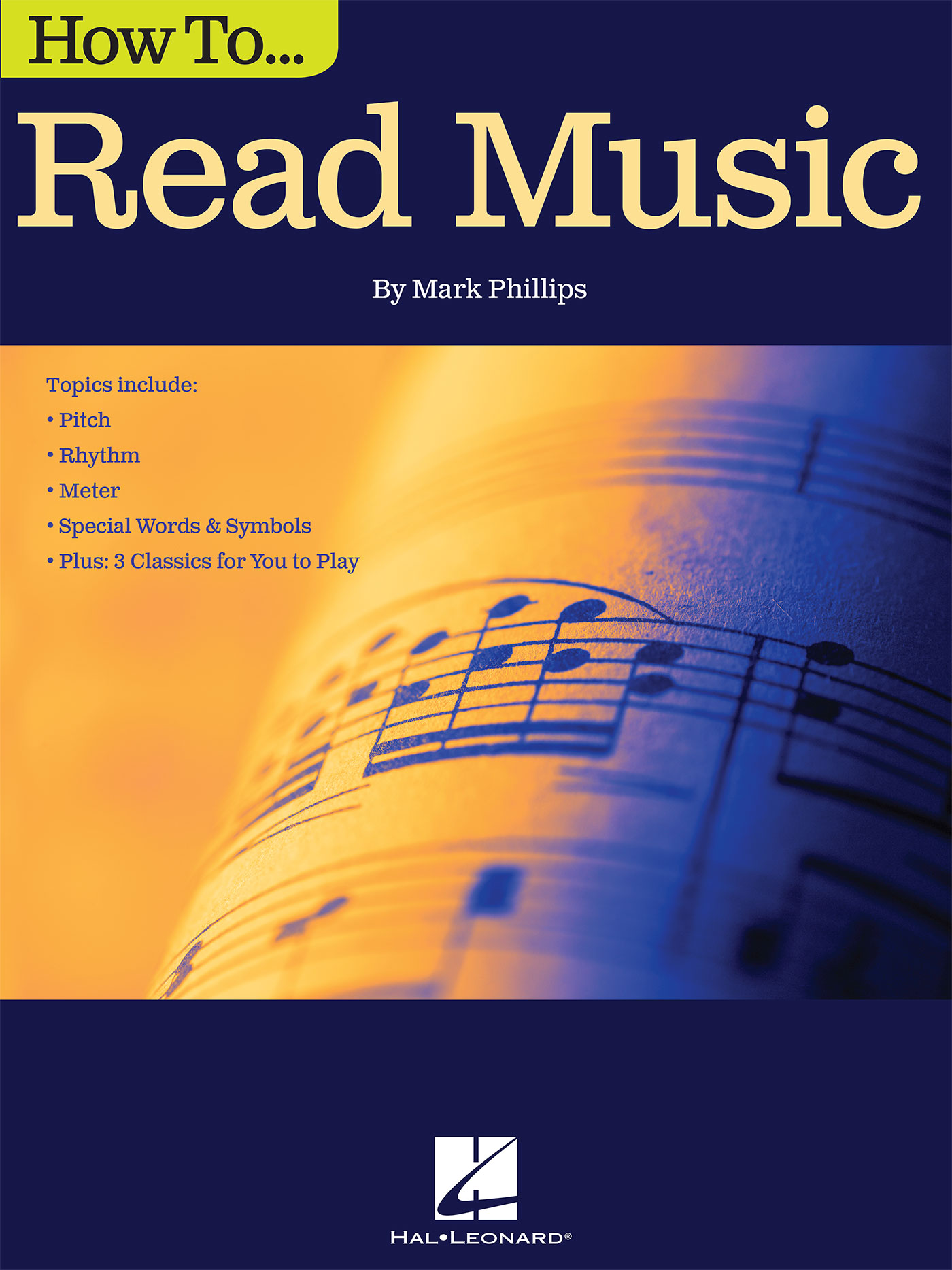7777 W. Bluemound Rd. P.O. Box 13819 Milwaukee, WI 53213
Copyright 2015 by HAL LEONARD CORPORATION
International Copyright Secured All Rights Reserved
In Australia Contact:
Hal Leonard Australia Pty. Ltd.
4 Lentara Court
Cheltenham, Victoria, 3192 Australia
No part of this publication may be reproduced in any form or by
any means without the prior written permission of the Publisher.
For all works contained herein:
Unauthorized copying, arranging, adapting, recording, Internet posting,
public performance, or other distribution of the printed music
in this publication is an infringement of copyright.
Infringers are liable under the law.
Visit Hal Leonard Online at
www.halleonard.com
Chapter 1
Before You Start
What Is Music Reading?
When you read music, you decipher information conveyed by symbols called notes that appear on a five-line grid called a staff. Then you use that information to play the music on your instrument, or just to hear it in your mind if youre a super-advanced musician like Bach or Mozart!
This is what notes look like. Notice that they come in various shapes:

This is what a staff looks like:

Some REAl Music
This is what notes look like on a staff:

So far, things are pretty simple. In the Three Blind Mice example above, the music is written for a singer; you know this because lyrics appear beneath the notes. But you, whether a singer or not, can glean some important information about reading music from this short example.
Whats important to realize is that a note on a staff gives you two pieces of information at the same time.
- It tells you the notes pitch (how high or low the note is). Notes get higher in pitch as they move higher on the staff and lower in pitch as they move lower on the staff.
- It tells you the notes duration (how long it is to be held). The different shapes of the notes signify whether they are long notes or short notes or somewhere in between.
In Three Blind Mice, because the notes are all the same shape, they are held for the same amount of time. Mentally, or out loud if you wish, sing the lyrics Three blind mice and notice that each word is held for one unit of time and that those units are of equal duration. If you understand all this, youre already reading music. Congratulations!
Reading Music in Theory vs.
Reading Music in Practice
If you wanted to learn how to swim, you probably wouldnt do very well just by reading a book about it. Youd have to get in the water and move your arms and legs and practice for quite a while. Its pretty much the same thing with reading music. If you only read about it, without doing it on an instrument, you wont get very far. Thats because in order to read music fluently, you have to understand at a glance the information the notes give about their pitch and duration.
Think about reading text. When you see a word, any word, you know instantly what it is. If you had to sound it out letter by letter, as a first grader might do, you would be a very slow reader. Its the same thing with reading music. You need to understand three things instantly when you look at music:
- How high or low the notes are, based on their position on the staff.
- How long or short the notes are, based on their shapes.
- Where to find those notes, or how to finger them, on an instrument.
About the Piano Keyboard
When most beginners start learning musicwhether its to play an instrument, or to learn about music theory, or to learn how to read musicthey use the piano keyboard as a starting point. Thats because () its visually conducive; you can see all the notes at once and () its easy to play because, as J. S. Bach once pointed out about keyboard instruments, all you have to do is hit the right note at the right time and the instrument plays itself!
So, rather than simply read about how to read music, you should play all the examples in this book on a piano keyboard, either acoustic or electric. If you dont own one, you should borrow one or buy one. New electronic keyboards can be found for less than $. However, because this isnt a book about how to play the piano, per se, we wont dwell on fingering and technique and so on. Well give you just the information you need to play the examples on the instrument.
Chapter 2
ABOUT PITCH, PART 1
More About the Staff
The five lines of the staff are numbered from , with the bottom one called the first line and the top one called the fifth line:

The staff consists not only of its five lines but also of the four spaces between the lines. These are numbered from , with the bottom one called the first space and the top one called the fourth space:

More About the Pitches of Notes
Every note has a letter name, depending on where it falls on the staff; that is, which line it sits on or which space it sits in. Only the first seven letters of the alphabetA, B, C, D, E, F, Gare used in naming notes, with each letter higher in pitch than the letter that precedes it. So, if you move from A to B to C, you are moving higher in pitch, and the notes move higher on the staff. Conversely, if you move from C to B to A, you are moving lower in pitch and the notes move lower on the staff.
What if you want to play the next note higher than G? Think about the numbers on the face of a clock. If you start at and go to and then continue, you come to again. The same principle applies to the musical letter names. After G, you come to A again. So, a longer series of ascending notes might look like this: A, B, C, D, E, F, G, A, B, C, D, E, F, G, A, B, C
Moving in a downward direction, the next note below A is G again. So, a long series of descending notes might look like this: G, F, E, D, C, B, A, G, F, E, D, C, B, A, G, F, E
Of course, its not enough to simply recognize the letter names of notes by their position on the staff. You also need to know (pretty much instantly) where to find them on an instrumenton a piano keyboard for the purposes of this book. And that comes from practice, some hands-on doing!
More About the Shapes of Notes
If the letter names tell you the pitches of the notes and you know where to find those pitches/letters on the piano keyboard, why doesnt written music consist of just letter names? Well, some people do notate very simple music with letter names. But letter names dont give you any information about rhythm; they dont tell you how long to hold the notes. Thats where the different shapes of notes come in.

